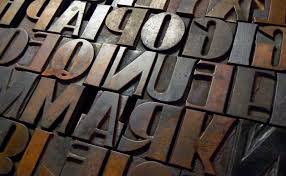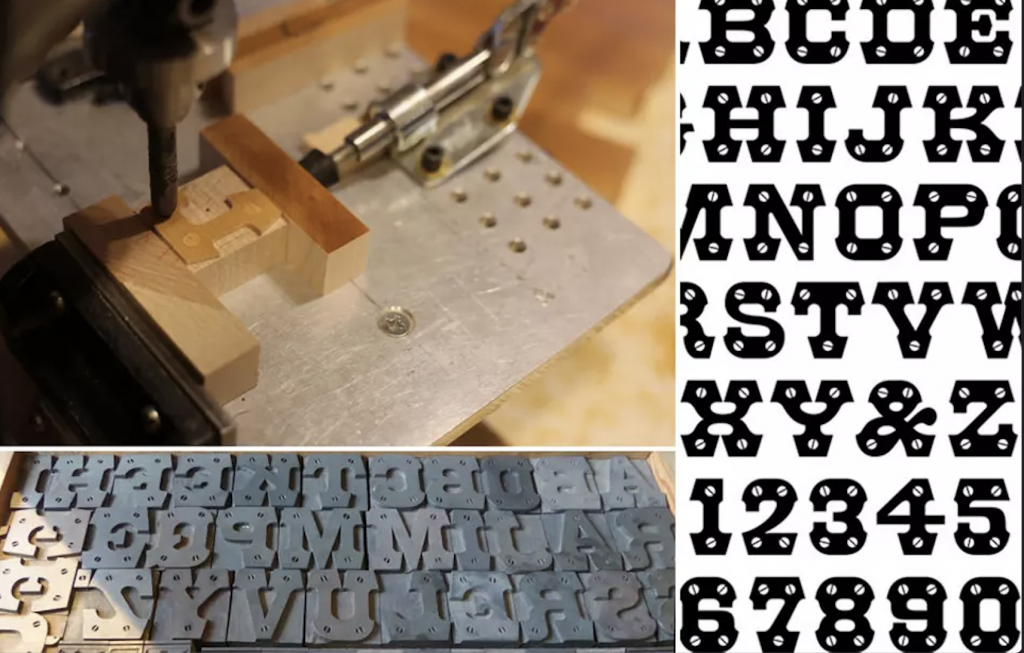
https://rhollick.wordpress.com/2015/07/01/wood-type/
How it began
The history of the wood type letterpress poster began in 1828 when Darius Wells’ was the first to invent the means to produce letters out of wood. Along with this, he published the first known wood type catalogue just one year later. Type made out of wood was created as an alternative to metal type, which was only practical for smaller-size prints. The demand for larger size type grew as posters sizes became bigger and bolder. Wood type could be made at any size and eliminated many problems associated with creating large-scale metal type. The advantages of wood type were affordability, accessibility. A disadvantage of wood type was durability.

https://creativecloud.adobe.com/discover/article/bringing-wood-type-into-the-21st-century
The lateral router
Until this time, the procedure was to draw the letter on wood, cut around the letter with a graver or knife, then cut out the excess wood. What changed the process of making wood letter type significantly was Well’s invention of the lateral router. This machine allowed for better control and decreased cutting time by more than half. William Leavenworth later contributed to the wood type industry combining the pantograph to wells router, forming the machinery required for mass production of wood type.

https://seanholton23.wordpress.com/2016/03/09/woodtype-posters/
Bringing wood type into the 21st centry
I personally enjoy the style of old posters made using wood type. like we’ve talked about in class, I understand that the reason posters were so busy and lacked any sort of hierarchy was because designers were so excited to now have access to all new fonts. in modern-day we look at this is think the lack of hierarchy and mix and match feeling on the type choices is all wrong! But I can appreciate that then they felt this was the most effective way to do it. Just like the things we do as designers today, may look the same to the people in our future.
Graphic Designers today still create posters and spreads that are inspired by wood type. A 19th-century distressed wooden typeface can bring a handmade, rustic feel to a digital design. The hamilton wood type and printing museum has been working on digitalized versions of original wood type collections.
https://woodtype.org/pages/what-is-wood-type
https://woodtype.org/blogs/news/80-the-birth-of-a-wood-type
https://creativecloud.adobe.com/discover/article/bringing-wood-type-into-the-21st-century
Leave a Reply